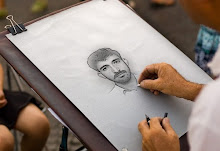
Mount Everest is so famous for being so high that you've probably heard of it before. It has been known the world over since the early 1950s when Sir Edmund Hillary and Tenzig Norgay first climbed to its awesome summit. Hillary surveyed Everest at the time and determined that it was 29,000 ft/8840m high - a figure amazingly close to the current reading of 29,035 ft/8850m, which was confirmed using radar and global positioning satellite (GPS) technology.
Using state-of-the-art technology Professor Brad Washburn of the Boston Museum of Science, the world's foremost mountain cartographer, and his team have calculated that earth's highest elevation is actually 7 feet higher than the previous record. That makes the official height 29,035 ft/8850m. Thanks to some engineering whizzes at the Massachusetts Institute of Technology who developed really light, high-tech gear, the work of Washburn was made easier because he was able to hand carry a radar device to the top of Everest where it could be positioned to measure the actual height of the mountain - underneath all that snow. GPS technology was also deployed near the summit, which uses satellite signal relays to take readings from the top of Everest. After months of crunching numbers Washburn's team arrived at the new, official world-record elevation.
They've also determined that the Himalayan Mountains are still growing higher, at a rate of about 2.4 in/6.1cm per year. That's twice as fast as previously thought. A growth rate of 2.4 in/6.1cm per year doesn't sound like very much. If you think about it, that means in the last 26,000 years the Himalayans have risen almost a mile into the upper reaches of the earth's atmosphere!
When Hillary and Norgay climbed to the top of Everest they wore oxygen tanks. Because Everest is so high it juts into the upper reaches of the earth's atmosphere, where there are much lower concentrations of oxygen than at sea level. What that means to folks trekking up the side of Everest is that their bodies get less oxygen from each breath they breathe while climbing. But their brains and muscles require the same amount of oxygen to perform as they would at sea level. That makes it especially tough to climb Everest.
Try to imagine what it feels like to climb up a mountain with very little oxygen in your body - you get dizzy, your nose, fingers and feet get numb and tingly, your heart thunders in your chest trying furiously to keep up with the muscles' demand for oxygen. You feel sleepy, confused, downright stupid as your brain struggles to function on limited oxygen. Every step you take is extremely slow and plodding, requiring every ounce of will you have. Hillary and Norgay had extra oxygen to help them make the trip, but there have been a few people who have made the trip since who did it without the aid of oxygen - taking one step about every five minutes! About 4,000 climbers have attempted the summit of Everest, but only 660 have made it. One-hundred forty-two people have died trying.
Highest Mountains
Mount Everest is just one of over 30 peaks in the Himalayas that are over 24,000 ft/7315m high. Himalaya is a Sanskrit word meaning, "abode of snow", which is so true. The snowfields which dominate many of the peaks in the Himalayas are permanent. Yes, they never melt (not even in the summer). That means there are glaciers in the Himalayas - lots of them. Mount Everest is permanently covered in a layer of ice, topped with snow. The "top" of the mountain at which the elevation was measured can vary as much as twenty feet or more, depending on how much snow has fallen on its peak. Scientists believe that the actual tip of the rock lies tens of feet below the ice and snow on its summit. There are current plans to use ground penetrating radar to get a reading of the actual height of the mountain beneath all that snow. Although the Himalayan Range is only 1,550 miles/2480km long, the average height of all the major peaks in the Himalayas easily makes it the highest mountain range on land.

No comments:
Post a Comment